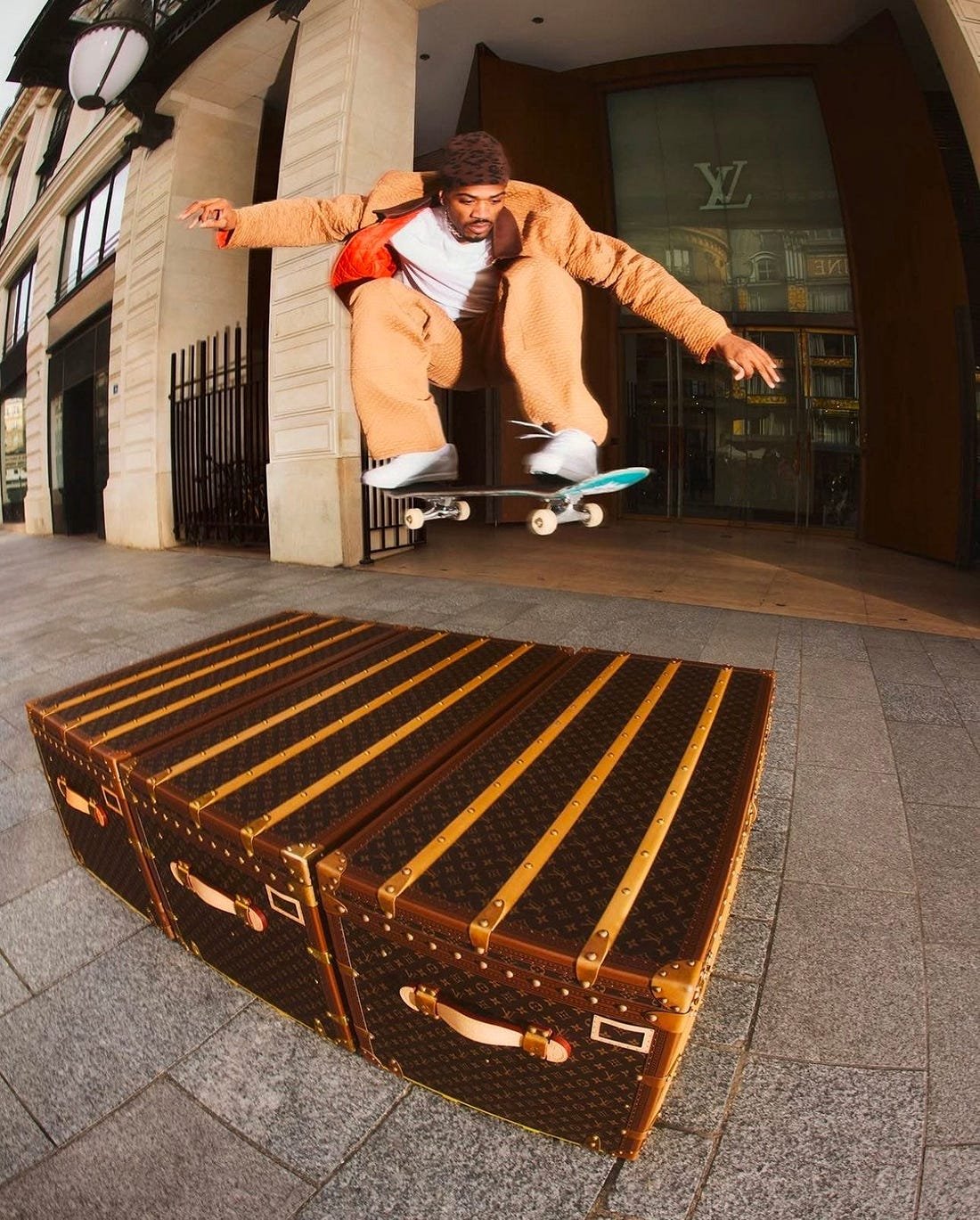First off, credit where it’s due - massive shout out to Daniel-Yaw Miller and his consistently razor-sharp DYM for SportsVerse newsletter. His coverage of Louis Vuitton’s partnership with Real Madrid is a must-read for anyone operating at the intersection of global sport and cultural influence. If you’re not subscribed yet, fix that. Immediately.
Now let’s get into it.
This Isn’t a Sponsorship. It’s a Cultural Power Move.
Louis Vuitton’s new alliance with Real Madrid isn’t just another luxury-meets-sport deal - it’s a seismic cultural recalibration. It signals a new era where fashion no longer rides shotgun to sport, but instead co-authors the script. This partnership isn’t about outfitting a team. It’s about owning the cultural moment - and the architecture of aspiration that defines it.
Let’s be crystal clear: Louis Vuitton didn’t need Real Madrid. And Real Madrid didn’t need Vuitton. That’s what makes this so potent. This isn’t a one-way brand equity transfer. It’s a cultural merger between two institutions that command respect and global reach - and who both understand that in the attention economy, aesthetic relevance is strategic currency.
Why It Matters: Fashion Is No Longer Optional in Sports
Ten years ago, this would’ve been unimaginable. Football clubs were obsessed with performance fabrics, not front-row cachet. Athletes were brand ambassadors at best, not fashion muses. But today? If your club doesn’t have a fashion POV, you’re not a cultural force. You’re just another sports team.
Luxury houses used to ignore sports because they didn’t see their customer in the athlete. That changed when they realized today’s athletes are the culture-drivers, tastemakers, and ultimate aspirational figures - especially for Gen Z and Gen Alpha.
Athletes are shaping it. They’re sitting front row. They’re starring in campaigns. They’re walking the runways. And in some cases, they’re even designing the collections. Tyshawn. Bellingham. Alcaraz. These aren't just sponsored athletes - they're cultural co-creators.
The Pharrell Factor: Bridging Luxury and Locker Rooms
Pharrell Williams’ appointment at Louis Vuitton menswear wasn't just a headline play - it was a structural redefinition of who fashion is for. No one else could authentically link the tunnel to the catwalk like Pharrell. His gravitational pull spans hip hop, streetwear, art, and sport. He is the bridge between Vuitton’s heritage and its future. And athletes? They’re already across that bridge.
That’s what makes this Real Madrid partnership more than just tailoring and travel trunks. It’s an intentional alignment between luxury, legitimacy, and lifestyle - one that stretches across continents, languages, and subcultures.
Real Madrid: The Fashion-Forward Club That Makes Sense
From a brand strategy POV, Madrid isn’t just a winning team - it’s the winning team. Legacy meets Gen Z relevance. Their current roster is dripping in style and social power: Jude Bellingham (already on Team Vuitton), Eduardo Camavinga (runway veteran), Trent Alexander-Arnold (regular front-row presence), and Kylian Mbappé (even if he's technically Team Dior). The locker room is already a luxury lookbook.
This is no longer just about who plays well on the pitch. It’s about who captures attention off it. That’s the game Louis Vuitton is playing. And with Real Madrid, they’ve just bought front-row seats to football’s most glamorous evolution.
Sport Is the New Runway - and Vuitton Owns It
Let’s not overlook the macroeconomic context here: the luxury sector is feeling the squeeze. Post-pandemic growth is flattening. Consumers are more critical, more cost-conscious, and more culture-savvy than ever. So what does a mega-brand like Louis Vuitton do? It doubles down on the deepest well of emotion and loyalty available today: sport.
Sport is one of the few arenas left where everyone is watching. It’s unfiltered, unpredictable, and globally unifying. And unlike traditional fashion campaigns, sports moments aren’t staged - they’re felt. That makes them priceless storytelling platforms. Vuitton understands that. And by securing its place at the heart of elite sport - from Formula 1 to the Olympics to Real Madrid - it’s not just selling luxury. It’s selling legacy, aspiration, and victory itself.
What's Next? The Future Is Ownership
Daniel-Yaw’s closing thoughts on Paris FC are a teaser for what might be the most ambitious next phase of this play: brand ownership of sport. Not sponsorship. Not licensing. Full-blown integration. If LVMH decides to turn Paris FC into the on-field embodiment of French fashion and cultural luxury, we are talking about an unprecedented evolution in how sport is branded, packaged, and experienced.
TL;DR: This Is Not a Trend. This Is the Future.
Louis Vuitton’s partnership with Real Madrid isn’t just a smart deal. It’s a declaration of dominance in a new cultural order - one where sport, fashion, music, and identity converge. If you’re a brand that still thinks of sports as a “collab opportunity” instead of a foundational storytelling pillar, you’re not just behind - you’re irrelevant.
Welcome to the new game. Louis Vuitton didn’t just dress the winners. Now, they are the winners.
📝 Again - big love to Daniel-Yaw Miller for lighting the path on this story via SportsVerse. If you care about this space, subscribe. You’ll thank yourself later.





